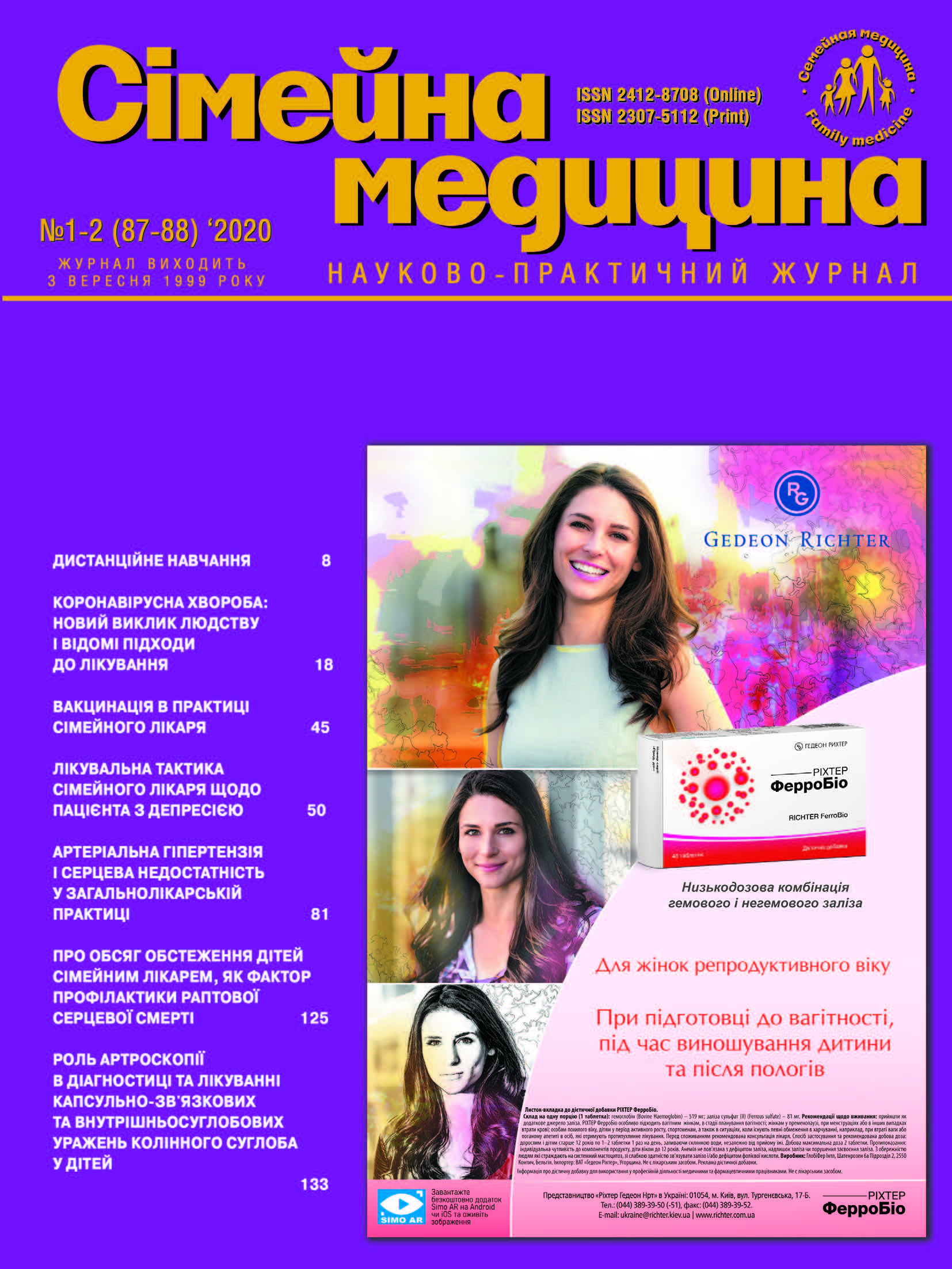Arterial Hypertension and Heart Failure in General Practice
##plugins.themes.bootstrap3.article.main##
Abstract
##plugins.themes.bootstrap3.article.details##

This work is licensed under a Creative Commons Attribution 4.0 International License.
Authors retain the copyright and grant the journal the first publication of original scientific articles under the Creative Commons Attribution 4.0 International License, which allows others to distribute work with acknowledgment of authorship and first publication in this journal.
References
Жарінов О.Й. Переносимість та ефективність метопрололу та бісопрололу у хворих з хронічною серцевою недостатністю залежно від віку / О.Й. Жарінов, О.Є. Кітура // Кардіологу-практику. – 2006. – № 1 (4). – С. 6–16.
Ждан В.М. Аспекти терапії пацієнтів із серцевою недостатністю в поєднанні із фібриляцією передсердь в загальнолікарській практиці / В.М. Ждан, О.Є. Кітура, Є.М. Кітура, М.Ю. Бабаніна // Здобутки клінічної і експериментальної медицини. – 2016. – № 2 (26). – С. 53–56.
Ждан В.М. Клінічні аспекти патогенетичної терапії хронічної серцевої недостатності в загальнолікарській практиці / В.М. Ждан, О.Є. Кітура, Є.М. Кітура, М.Ю. Бабаніна // Медичні перспективи. – 2013. – № 2. – С. 44–46.
Рекомендації Асоціації кардіологів України з діагностики та лікування хронічної серцевої недостатності (2017). Серцева недостатність та коморбідні стани. 2018. – С. 6–66.
Buiciuc O, Rusinaru D, Levy F, Peltier M, Slama M, Leborgne L, Tribouilloy C. Low systolic blood pressure at admission predicts longterm mortality in heart failure with preserved ejection fraction. J Card Fail. 2011 Nov;17 (11):907-15.
Drazner MH. The progression of hypertensive heart disease. Circulation. 2011 Jan 25;123 (3):327-34.
Guder G, Frantz S, Bauersachs J, Allolio B, Wanner C, Roller MT, Ertl G, Angermann CE, Stórk S. Reverse epidemiology in systolic and nonsystolic heart failure: cumulative prognostic benefit of classical cardiovascular risk factors. Circ Heart Fail. 2009;2 (6):563-71.
Haider AW, Larson MG, Franklin SS, Levy D; Framingtiam Heart Study Systolic blood pressure, diastolic blood pressure, and pulse pressure as predictors of risk for congestive heart failure in the Framingham Heart Study. Ann Intern Med. 2003 Jan 7;138 (1):10—6.
Janardhanan R, Kramer CM. Imaging in hypertensive heart disease. Expert Rev Cardiovasc Ther. 2011 Feb;9 (2):199-209.
Kapoor JR, Heidenreich PA. Obesity and survival in patients with heart failure and preserved systolic function: a U-shaped relationship. Am Heart J. 2010 Jan;159 (l):75-80.
Maisch B, Alter P, Pankuweit S. Diabetic cardiomyopathy - fact or fiction? Herz. 2011 Mar;36 (2):102-15.
Regitz-Zagrosek V, Seeland U. Sex and gender differences in myocardial hypertrophy and heart failure. Wien Med Wochenschr. 2011 Mar;161 (5-6):109-16.
Roger VL, Weston SA, Redfield MM, Hellermann-Homan JP, Killian J, Yawn BP et al. Trends in heart failure incidence and survival in a community-based population. JAMA 2004;292:344-50
Vasan RS, Levy D. The Role of Hypertension in the Pathogenesis of Heart Failure: A Clinical Mechanistic Overview. Arch Intern Med, 1996;156:1789-96.
Yip GW, Fung JW, Tan YT, Sanderson JE. Hypertension and heart failure: a dysfunction of systole, diastole or both? J Hum Hypertens. 2009 May;23 (5):295-306.





